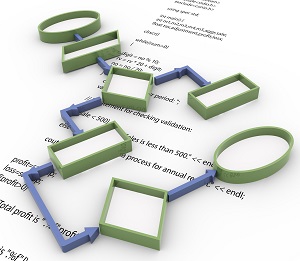05 Apr Knowing About Agents and Instruments
 Cause and Effect
Cause and Effect
Causal knowledge can be learned by experience, as described in our friend Yorrick’s early experiences with the source of good feelings (Section 4: Seeds of Knowledge). The process of learning from experience is empirical and very fuzzy, meaning it is difficult to describe or replicate the learning process artificially. Cause can also be learned through experimental techniques in which we Hypothesize–Experiment–Observe, and it can be learned through statistical analysis.
Today, we will focus on experience and the kinds of empirical connections we make between cause and effect. This information will be particularly valuable when we get into Section 8, which deals with expert systems (systems that model expert knowledge, much of it causal) apps and processes. Besides expert knowledge being predominantly causal, it is often difficult for experts to describe why they do things or know things because their knowledge is deep, often below the level of consciousness. This kind of hard-to-pin-point knowledge is often called “compiled knowledge” or paradigm.
Understanding Context Cross-Reference Click on these Links to other posts and glossary/bibliography references
|
|
|
| Prior Post | Next Post |
| Causal Chains in Action | A Good Excuse for Heuristic Logic |
| Definitions | References |
| causal relation experience | Minsky 1975 |
| empirical heuristics learning | Schank 1972 |
| modeling information knowledge | Hirst 1987 |
 We learn to reason about cause and effect (Hirst, 1987). Let’s take some examples of things we may observe and learn, and try to express them as rules of thumb (heuristics) that may be understandable by a computer. Creating formulaic examples is part of modeling, and we will get further into modeling in Section 7. Cause and effect possess important conceptual qualities: everything is caused by something. We can call that something an Agent. It is often the case that an Agent needs something to cause an effect. That thing the Agent uses can be called an Instrument. A driver is the agent of driving and the car is the instrument. The act performed by the agent can be called the Action. We can use these terms to build formulae useful for computer modeling in which each of the causal roles is treated as the relation that links one object to another.
We learn to reason about cause and effect (Hirst, 1987). Let’s take some examples of things we may observe and learn, and try to express them as rules of thumb (heuristics) that may be understandable by a computer. Creating formulaic examples is part of modeling, and we will get further into modeling in Section 7. Cause and effect possess important conceptual qualities: everything is caused by something. We can call that something an Agent. It is often the case that an Agent needs something to cause an effect. That thing the Agent uses can be called an Instrument. A driver is the agent of driving and the car is the instrument. The act performed by the agent can be called the Action. We can use these terms to build formulae useful for computer modeling in which each of the causal roles is treated as the relation that links one object to another.
 Here are some causal relations expressed as formulae to be read as Object (X) is related (R) to object (Y) by the explicit role named in (R):
Here are some causal relations expressed as formulae to be read as Object (X) is related (R) to object (Y) by the explicit role named in (R):
| Object X | Relation R | Object Y |
| Driver | Agent | Ground travel |
| Ground vehicle | Instrument | Ground travel |
| Aircraft | Instrument | Air travel |
| Flight | Action | Air travel |
| Ticket | Instrument | Passenger Air travel |
| Pilot | Agent | Aircraft |
 In this example, the driver is the agent, the cab (ground vehicle) is the instrument, and ground travel is the action. Agents, instruments and actions are critical components of causal reasoning. The way the formulae are organized is a form of knowledge representation (Minsky, 1975).
In this example, the driver is the agent, the cab (ground vehicle) is the instrument, and ground travel is the action. Agents, instruments and actions are critical components of causal reasoning. The way the formulae are organized is a form of knowledge representation (Minsky, 1975).
We will later discuss the subject of common sense. Common sense knowledge includes tons of ideas about cause and effect. Causal knowledge is not just for experts: it’s important for everyone. Heuristics are rules of thumb about processes or functions. By definition, a process or function is a way to bring about effects by doing things or causing things to happen. Therefore, process (heuristic) knowledge is causal in nature. In the next few pages we will study heuristic reasoning.
The fuzziness of causal knowledge (and other forms of knowledge) poses two problems for expert system designers:
1) How do you elicit enough of the key knowledge from an expert to make a system useful?
2) How do you design a system that captures the complexity and interactions of the different pieces of the expert’s knowledge?
| Click below to look in each Understanding Context section |
|---|
| Intro | Context | 1 | Brains | 2 | Neurons | 3 | Neural Networks |
| 4 | Perception and Cognition | 5 | Fuzzy Logic | 6 | Language and Dialog | 7 | Cybernetic Models |
| 8 | Apps and Processes | 9 | The End of Code | Glossary | Bibliography |








